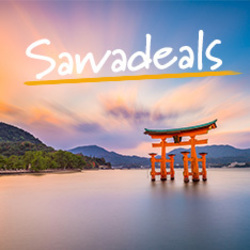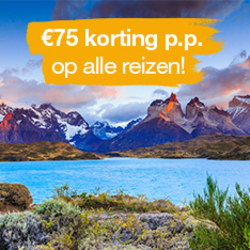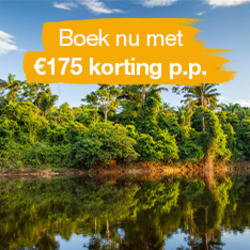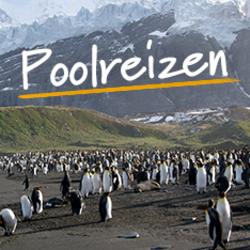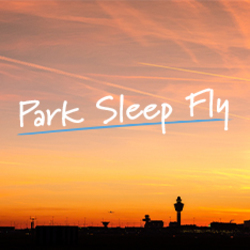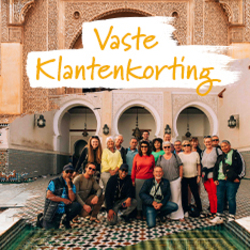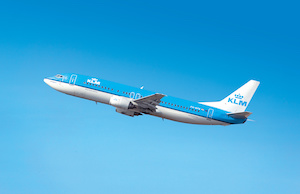Profiteer t/m 2 mei
BekijkActivities
- Culture
- Festival Holidays
- Natural Wonders
- Experience Bhutan's colourful, vibrant masked dance festivals. Visit the Paro Dzong and the incredible 'Tiger's Nest' monastery at Taktsang. Drive across the Dochu La and visit Punakha Dzong. Walk in the quiet Gangtey Valley. Visit the impressive Tashichho Dzong in Thimphu. Travel in a country where very few foreigners visit and tourism is still in its infancy
Food
-
1
Arrive Kathmandu
Start in Kathmandu and transfer to our hotel. The evening is free to relax.Royal Singi Hotel or similar
-
2
Fly to Paro
Today we fly to Paro. The flight is one of the most spectacular mountain flights in the world and takes us over the eastern Himalayas. If the weather is clear, we should get a fantastic view of much of the eastern half of the Himalaya, including Everest, Lhotse, Nuptse, Makalu and Kanchenjunga. The Paro Valley is considered to be one of the most beautiful valleys in Bhutan, with blue pine-covered hills and attractive solidly built houses among the paddy fields. If there is the time in the afternoon there will be a visit to visit the museum, dzong or the Kyichu Lakang; one of the oldest temples in Bhutan built by the 7th century Tibetan king Songtsen Gampo.Rema Resorts / Dewachen Hotel, or similar
-
3
Drive to Thimphu
Today we have an hour’s drive to Thimphu, the capital of Bhutan. The capital of Bhutan was Punakha until 1961 when the 3rd King changed it to Thimpu. The rest of the day is spent exploring Thimpu, where there is plenty to see and do. The main sights include the Memorial chorten, built in 1974 in honour of the 3rd King, Kuensel Phodrang, known locally as Buddha Point, where there is a huge statue of Buddha overlooking the whole of the valley. Tashi Chho Dzong is the main dzong and seat of government and usually only open after 5 pm. Other places of interest are Semthoka Dzong, the Takin Reserve, the Folk Heritage Museum, an Arts and Crafts School, the textile museum, the Post Office where you can get your own stamps made, plus the market is interesting to explore. If we do not see everything today, we have more time in Thimpu on our return.Hotel Pedling / Galingkha / Gakhil, or similar
-
4
Drive to Punakha; visit Chimmi Lhakhang and Punakha Dzong
We leave Thimphu in the morning and drive east to Punakha. The route climbs its way steadily on a good road to the Dochula Pass, where there are 108 chortens. At 3050m (10,000ft) the views over the eastern Himalaya are magnificent although this is most definitely weather dependent! We then descend to the valley floor and continue to sub-tropical Punakha. En-route we visit the Chimmi Lhakhang, built in 1499 to honour one of the more folkloric saints of Bhutan, Drukpa Kuenley. Nicknamed the Divine Madman or Mad Saint, he was a maverick lama, who subdued a demon who controlled the Dochu La. He built a chorten where the monastery stands, and he was reputed to have unorthodox ways of teaching Buddhism by suggesting outrageous behaviour and he was a great womaniser! He advocated the use of the phallus as a symbol to be painted on walls and houses, which were intended to drive away the evil eye. Most of the houses in this area are decorated with highly ornate phallic paintings. We walk through the village to the monastery with a chance to see the traditional Bhutanese style of farmhouses.We continue on to Punakha, which, at an altitude of 1200m is warmer than Paro or Thimpu. Punakha was once the capital of Bhutan and it is still the winter residence of the monastic body. We visit the dzong, one of the most beautiful in Bhutan and the second one to be built in 1637. This remarkable fortress is situated between the Mo and Po Chhu Rivers and it has survived many fires, an earthquake and several floods. Over the years it has been repaired and added to and has several interesting features to protect it against invasion. Overnight in Punakha or Wangdi Phodrang. Today's drive is 72km and takes about 3 hours.Meri Phunsum Resorts / Punatsangchu Cottages / Zangtopelri Hotel / Sonamgang Hotel, or similar
-
5
Drive to Gangtey (Phobjikha); afternoon hike
Today we leave the main road and drive up to the Lawala Pass and into the beautiful Gangtey Valley. If it is possible, we can visit the ruins of Wangdue Dzong, en-route. After lunch, there is plenty of time to explore one of the most beautiful valleys in Bhutan. Often called the Phobjikha Valley, this U-shaped glacial valley is wide with hardly any trees and gives the impression of a vast space. There is some of the best marshland in Bhutan and the valley is rich in flora and fauna. Look out for barking deer, sambar deer and wild boar. Himalayan Black bears have been spotted in the valley an there is a wealth of birdlife. It is also where the graceful Black-necked cranes come from Tibet during the winter season to roost. The cranes usually arrive towards the end of October and upon arrival, they fly around the monastery three times! They spend the winter in the valley and in spring they again fly three times around the monastery and fly back to Tibet for the summer. We can also visit the black crane information centre and the Gangteng Monastery. Today's drive is approximately 84km and will take 2.5 to 3 hours, although variable road conditions may mean we spend longer on the road.Dewachen Hotel / Home Resort / Padmasambhava Guesthouse / Ue Loki Guesthouse, or similar
-
6
Morning hike in Gangtey; drive to Wangdue Phodrang (or Punakha)
This morning we will set off on foot from our hotel and go on a walk through the Gangtey Valley (approx. 5km/2-3 hours) - the climb up to the monastery involves around 500m ascent. This glacial valley is made up of farmlands, pastures and blue-pine forests. We will encounter herders caring for their herds, which graze on the dwarf bamboo of the area. After lunch, we drive for about 2.5/3 hours back to Wangdue Phodrang.Meri Phunsum Resorts / Punatsangchu Cottages / Zangtopelri Hotel / Sonamgang Hotel, or similar
-
7
Drive to Thimphu; sightseeing
In the morning we drive for about 2.5-3 hours back to Thimphu. We have time in the afternoon to see any of the sights we did not see on day 3.Hotel Pedling / Galingkha / Gakhil, or similar
-
8
Full day at Paro, Thimphu, Decehenpu or Genekha Festival (depending on departure date)
The 28th September 2022 & 17th September 2023 departures will spend all day at Thimphu Festival and will drive to Paro in the early evening.The 26th March 2023 departure will drive to Paro (1hrs drive) early in the morning and spend all day at the Paro Festival.We spend the whole day experiencing one of the many vibrant festivals in Bhutan. During the festivals the Bhutanese gather to see the monks and lay dancers dressed in colourful brocade and silk costumes, wearing painted masks re-enacting the stories of the religious and lay history of Bhutan through music and dance. For several days there are masked dances and prayer meetings, and a general carnival atmosphere prevails as many villagers arrive to meet old friends. The Bhutanese all dress in their finest national dress for the festival and one of the highlights is the riot of colours of the magnificent silks on display. Paro and Thimpu are the most popular festivals in Bhutan whereas the one at Decehenphu is much smaller.Rema Resorts / Dewachen Hotel, or similar
-
9
Day walk to Taktsang, Tiger's Nest Monastery
Today we hike (approx. 9km in total for the round trip) to Takstang Monastery, also known as the 'Tiger’s Nest'. This spectacular building is perched on the ledge of a cliff high above the Paro Valley. Partly destroyed by fire in 1998, it has now been completely restored to its former magnificence. From the car park to the cafeteria viewpoint is about 2 hours uphill walk through the forest. From here we have incredible views of the monastic buildings which cling impossibly to the cliff wall. For the energetic there is the chance to walk even higher to the actual monastery. This will take another 2 hours and involves walking up and down stone steps. We highly recommend a trekking pole or you can buy a wooden stick at the car park. There are horses available up to the cafeteria for those who do not want to do the hike but please note that this is an unregulated activity and helmets are not available. We spend about an hour at the monastery looking around the temples (photography is not allowed inside) before descending to the cafeteria for lunch. After lunch we return to the car park and drive back to our hotel. There should be some time to have a look round Paro before dinnerRema Resorts / Dewachen Hotel, or similar
-
10
Fly to Kathmandu
We transfer to the airport to check in for our flight back to Kathmandu. The rest of the day is free for individual sightseeing or shopping. You may want to visit the famous Durbar Square in the heart of the old city, the monkey temple at Swayambhunath, the largest Buddhist stupa on earth at Boudhanath or the Hindu temple at Pashupathinath. Another option is to take a taxi to Bhaktapur, the mediaeval city 17km east of the capital. Bhaktapur has its own Durbar Square with many temples and statues and a maze of narrow streets, which are generally quieter than the capital. Please be aware that due to the 2015 earthquake some of these places have still not been fully rebuilt. The Exodus representative in Kathmandu will be able to give you more information on what there is to see.Royal Singi Hotel or similar
-
11
End Kathmandu
End Kathmandu after breakfast. For those on group flights, these depart in the morning and will arrive in the UK the same day.




